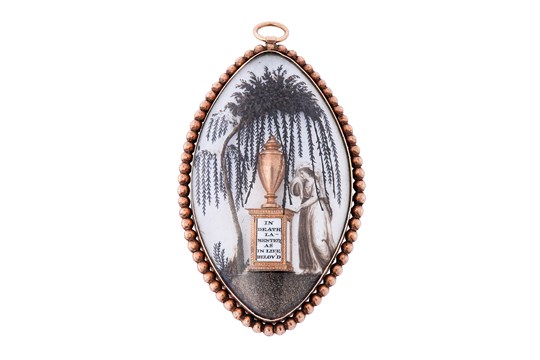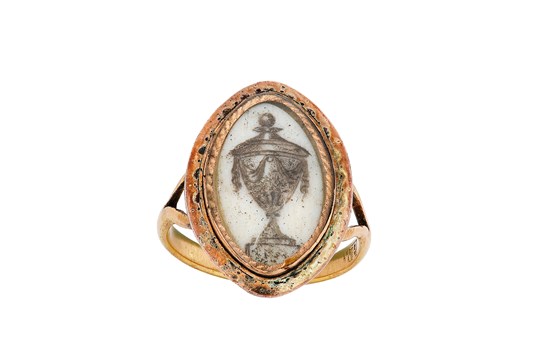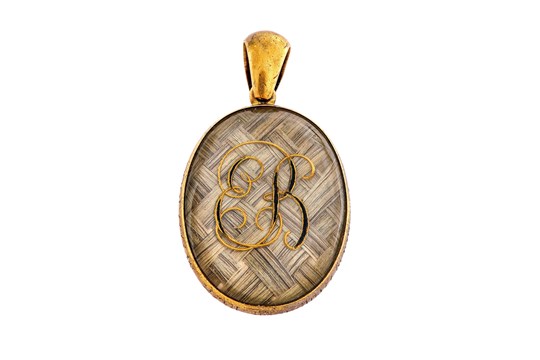Mourning Jewellery in Georgian and Victorian Britain
Symbolism, Sentiment and Collectability
Mortality has long been a central theme in the decorative arts. From the Medieval period onwards, memento mori objects (from the Latin meaning ‘remember that you must die’) served as visual reminders of life’s transience. Early rings from the 16th and 17th centuries often featured enamelled skulls or skeletons, sometimes accompanied by inscriptions such as Behold the Ende to remind the wearer of earthly impermanence. Though initially rooted in religious thought, mourning jewellery evolved into a more personal and expressive art form, particularly in the 18th and 19th centuries.

A late 18th century mourning pendant.
The Rise of Mourning Jewellery in Britain
While there was some Royalist memorial jewellery during the Interregnum, it was under Charles II (1660–1685) that mourning jewellery began to flourish as a recognised form of commemorating the deceased. By the 18th century, it had become common practice for upper-class families to leave provisions in their wills for the commissioning of mourning jewels.
Early examples were often macabre, using skeletons, skulls and coffins as motifs. By the mid-1700s, however, such imagery had softened in favour of more sentimental and symbolic scenes. These included urns, weeping maidens and willows, often painted on vellum or ivory and set beneath rock crystal or glass. Symbolism was rich and varied: broken columns represented lives cut short, anchors symbolised hope, and pearls denoted tears. Mounts and materials conveyed further meaning, with black enamel used for mourning a married person and white for children or unmarried individuals.
Hairwork was a defining feature of many mourning jewels, offering the wearer a deeply personal, tactile connection to the deceased. Hair could be intricately braided, woven, or pressed into forms and, in some cases, included locks from both spouses to signify eternal union.

A mourning ring, circa 1785.
The Victorian Obsession with Mourning
The popularity of mourning jewellery reached its peak in the Victorian era, especially after the death of Prince Albert in 1861. Queen Victoria’s lifelong mourning influenced an entire generation. Jewellery made from jet, bog oak, vulcanite and gutta-percha became widespread, with black enamel and hairwork continuing to dominate styles of remembrance.
Although interest in mourning jewellery declined after Victoria’s death in 1901, there was a brief resurgence following the Titanic disaster in 1912, showing how grief and remembrance remain timeless human experiences, echoed in the jewellery created to mark them.

A rock crystal, enamel and hairwork mourning locket, last quarter of the 19th century.
Interested in the value of your antique or mourning jewellery?
Our Jewellery Department offers complimentary auction valuations and welcomes entries for future sales.
Please contact our team for more information:
jewellery@chiswickauctions.co.uk